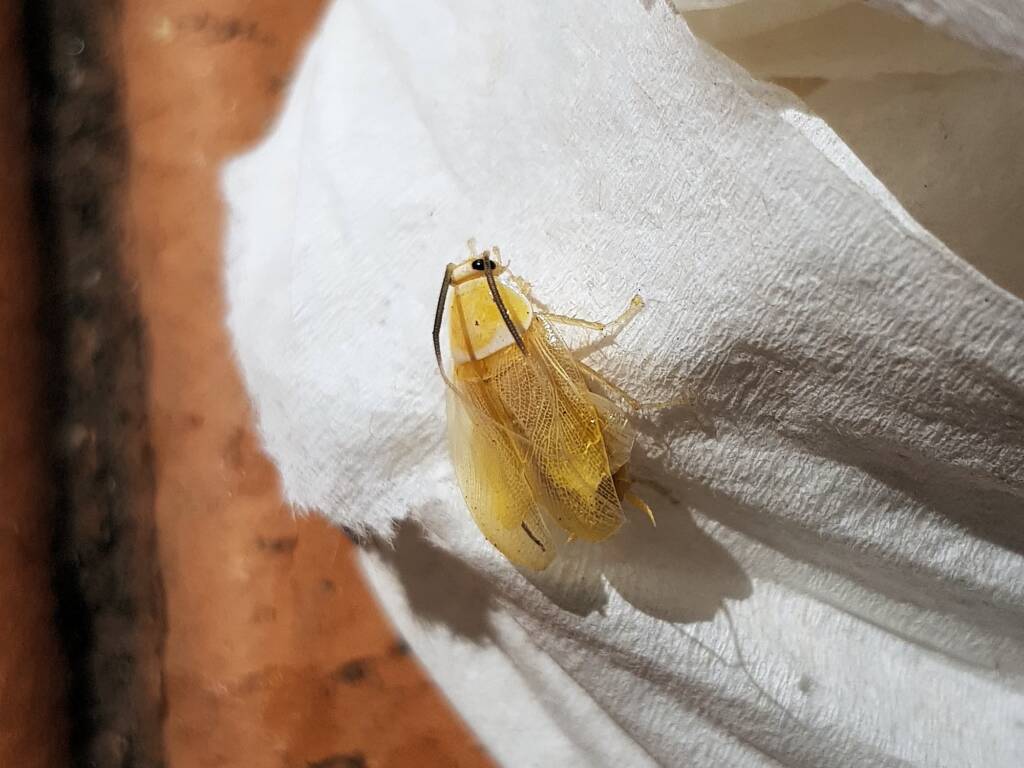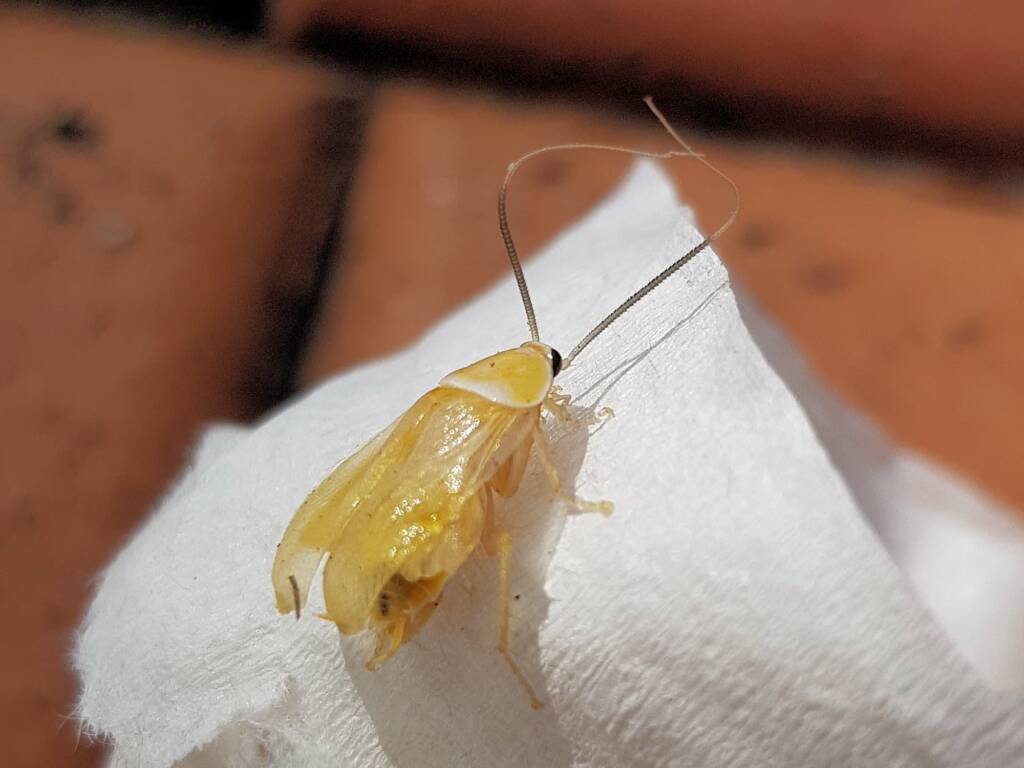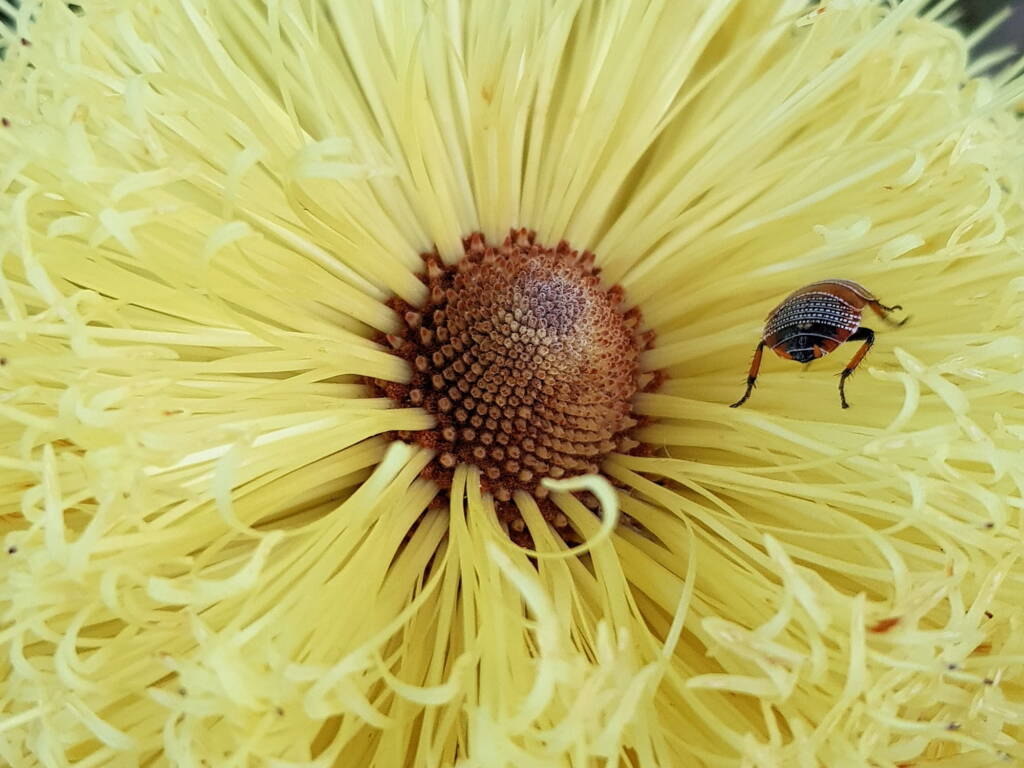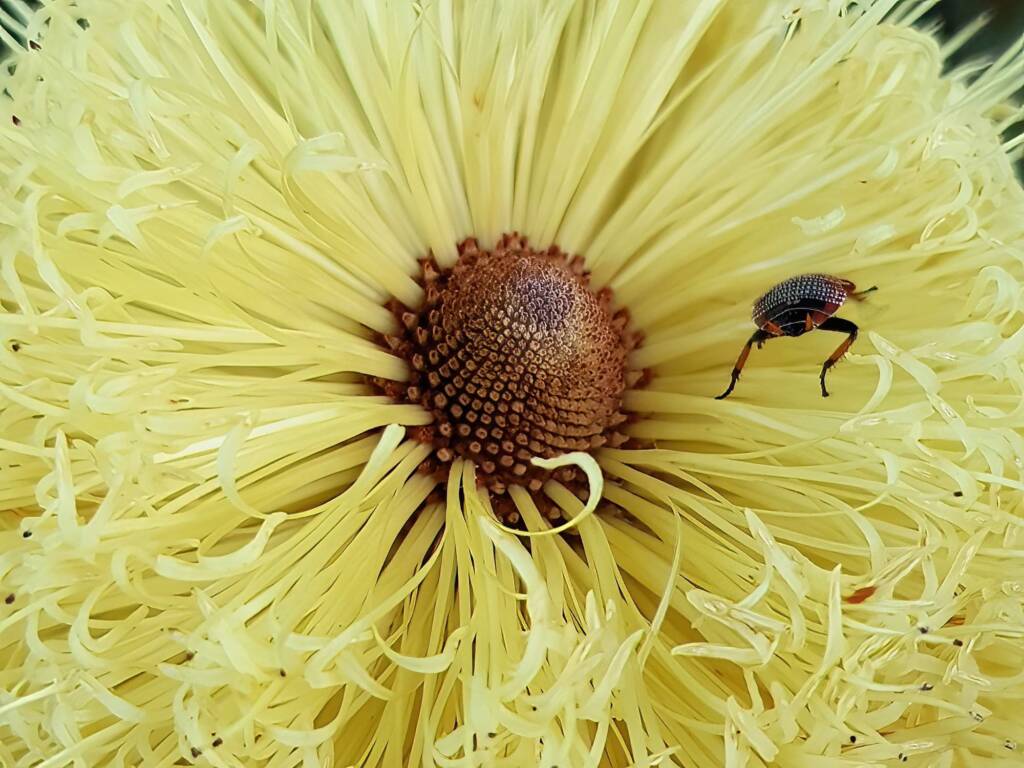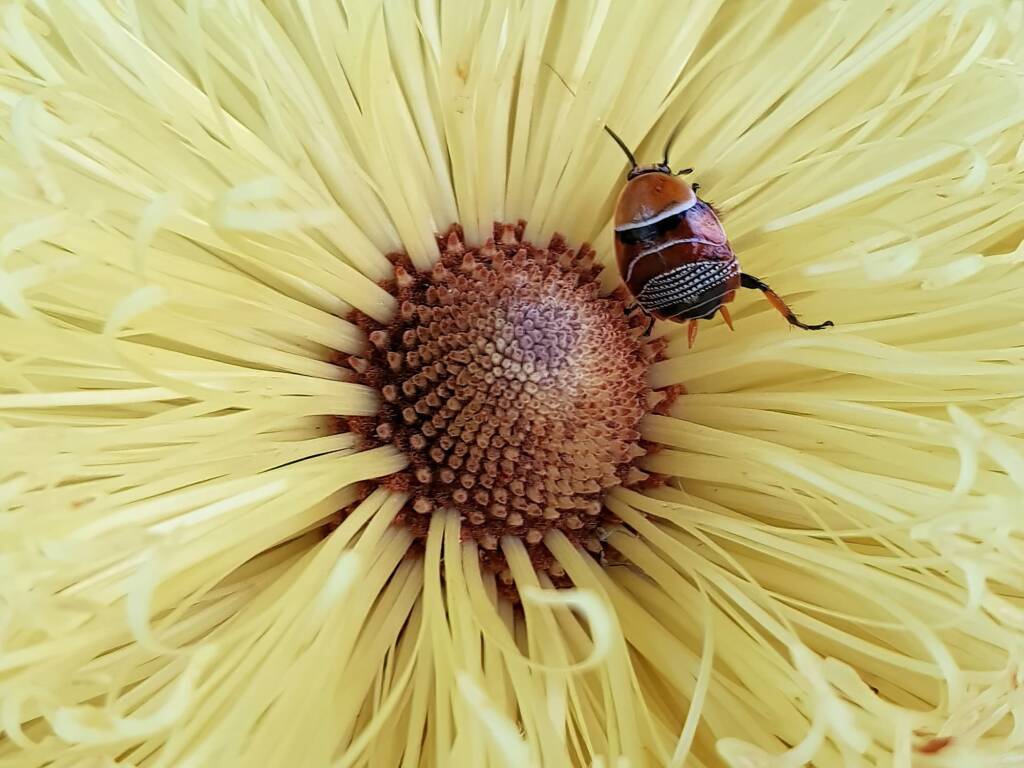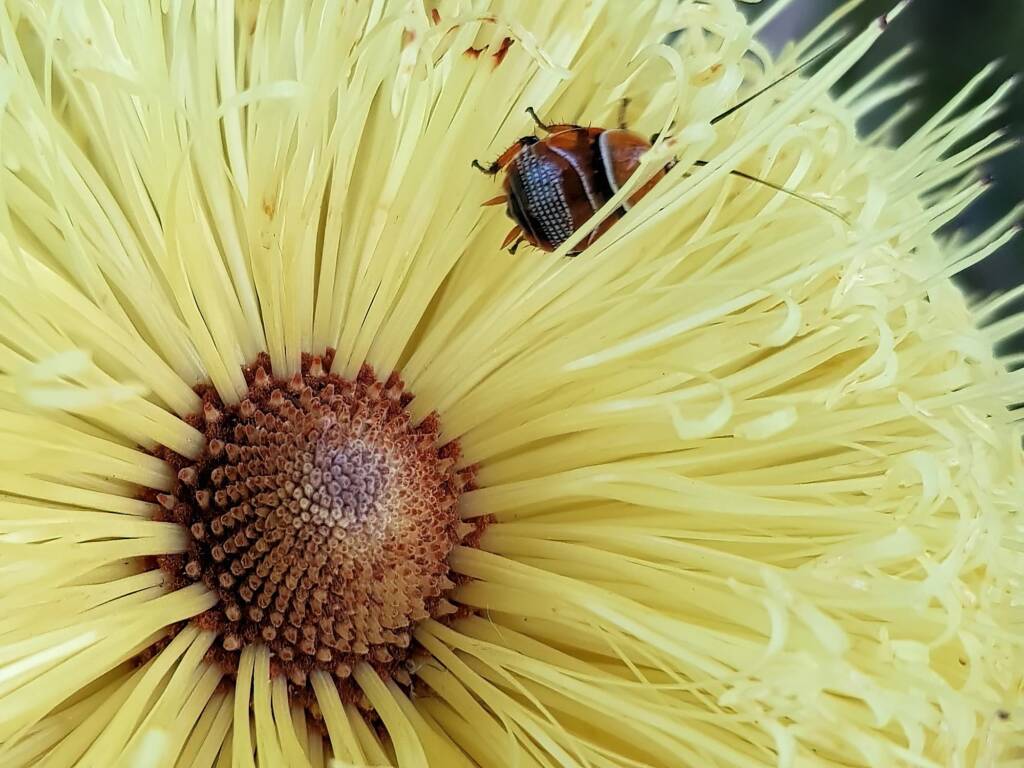BlattodeaAnamesia sp Balta bicolor Bush Cockroach Ellipsidion Ellipsidion australe Ellipsidion humarale Nasutitermes triodiae Termite — Alate
Museum field guides describe the Bush Cockroach these as terrestrial invertebrates. Usually have white-yellow edge behind the head areas. the head itself is not covered by the pronotum — the pronotum being a prominent plate-like structure that covers all or part of the dorsal surface of the thorax of some insects.

These cockroaches, often commonly referred to as Bush Cockroaches or Native Cockroaches, are active during the day. It is thought that they mainly feed on pollen, honeydew and moulds. They can sometimes be found sheltering from rain under leaves or in flowers or escaping from the heat on the side of buildings.

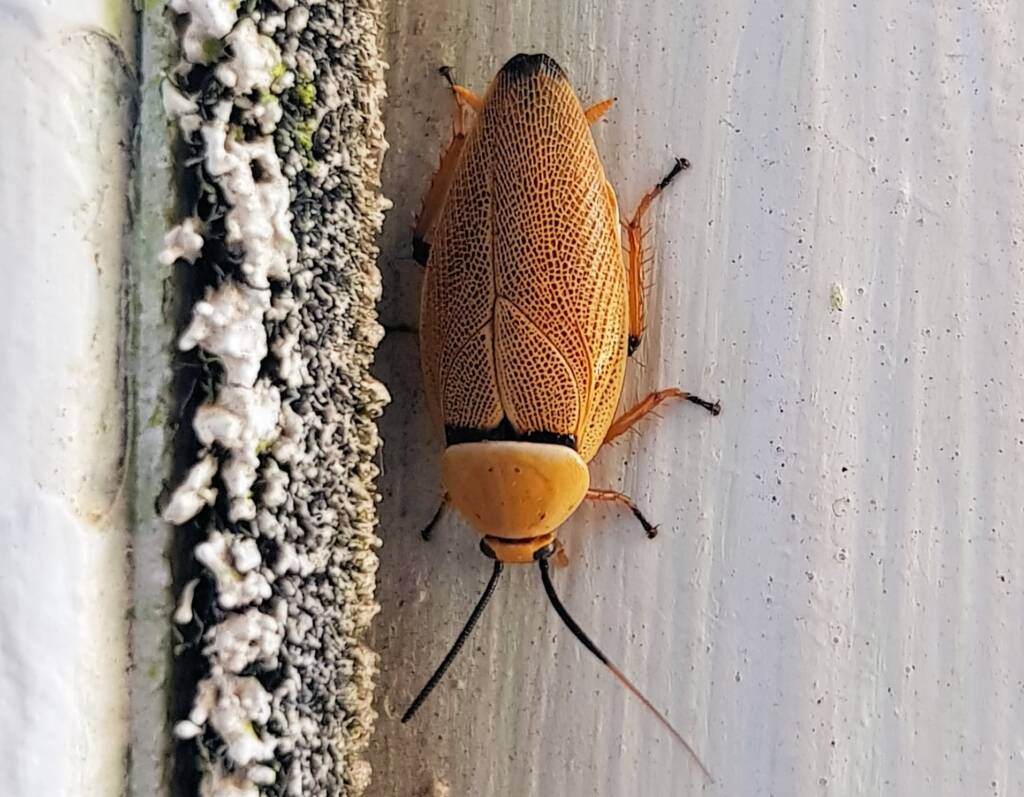
At the end of the bush cockroach abdomen are a pair of cerci. These peg-like structures are very sensitive and can pickup tiny changes in air current, alerting them to anything or anyone approaching.

It is thought for some species of Ellipsidion, mating can occur at any time of the year. After mating, the female bush cockroach lay their eggs enclosed in a single capsule called an oöthecae. This is a pale, soft egg-sac that hardens once exposed to air. The oöthecae can be carried around for a while before the females deposits it (usually attached to leaves or stems of a plant).
The young that emerge from the egg are know as “nymph”. They grow through stages known as “instar”. At each instar stage, the bush cockroach sheds it outer exoskeleton, as it increases in size. Colour changes are also observe through the instar stages.
The following image on the wall of an urban home in the Adelaide Hills, South Australia, show a time-lapse of approximately 20 minutes.
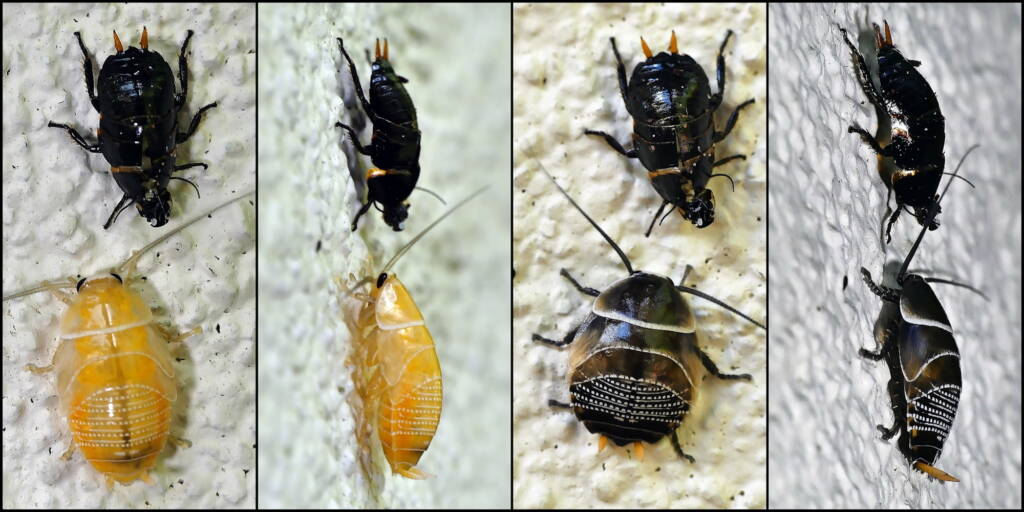
Both nymph and adults are often seen on flowering plants, as pictured here on the Banksia praemorsa.

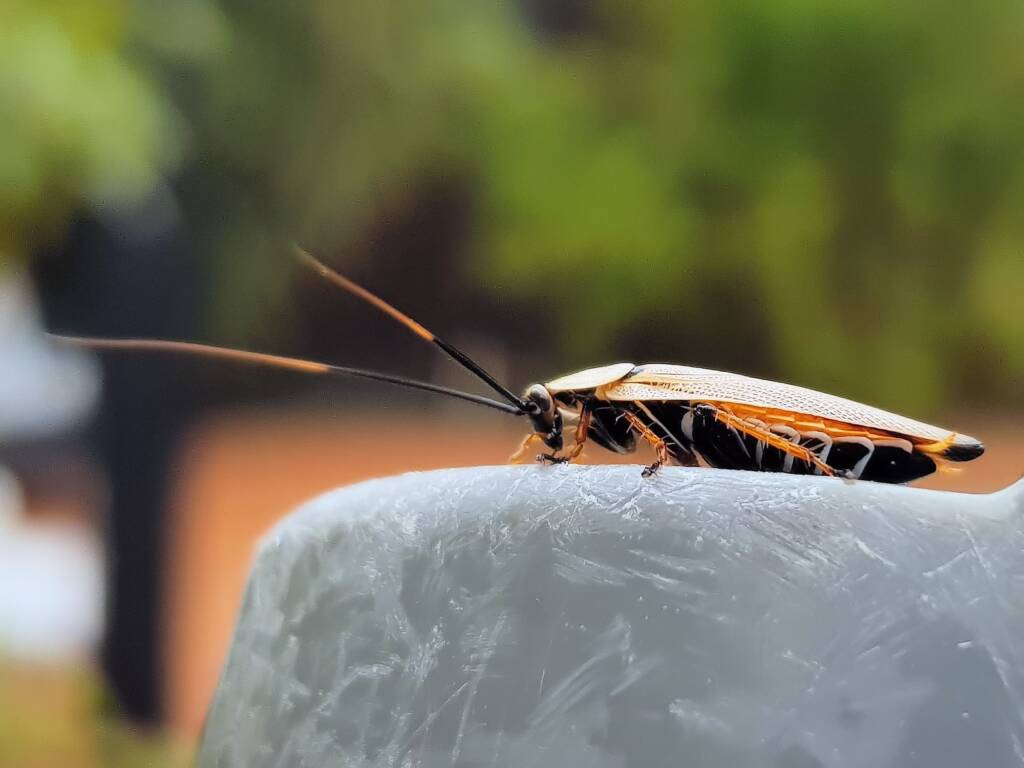
- Scientific classification
- Kingdom: Animalia
- Phylum: Arthropoda
- Subphylum: Hexapoda
- Class: Insecta
- Informal: Pterygotes
- Order: Blattodea
- Superfamily: Blaberoidea
- Family: Ectobiidae
- Subfamily: Pseudophyllodromiinae
- Genus: Ellipsidion
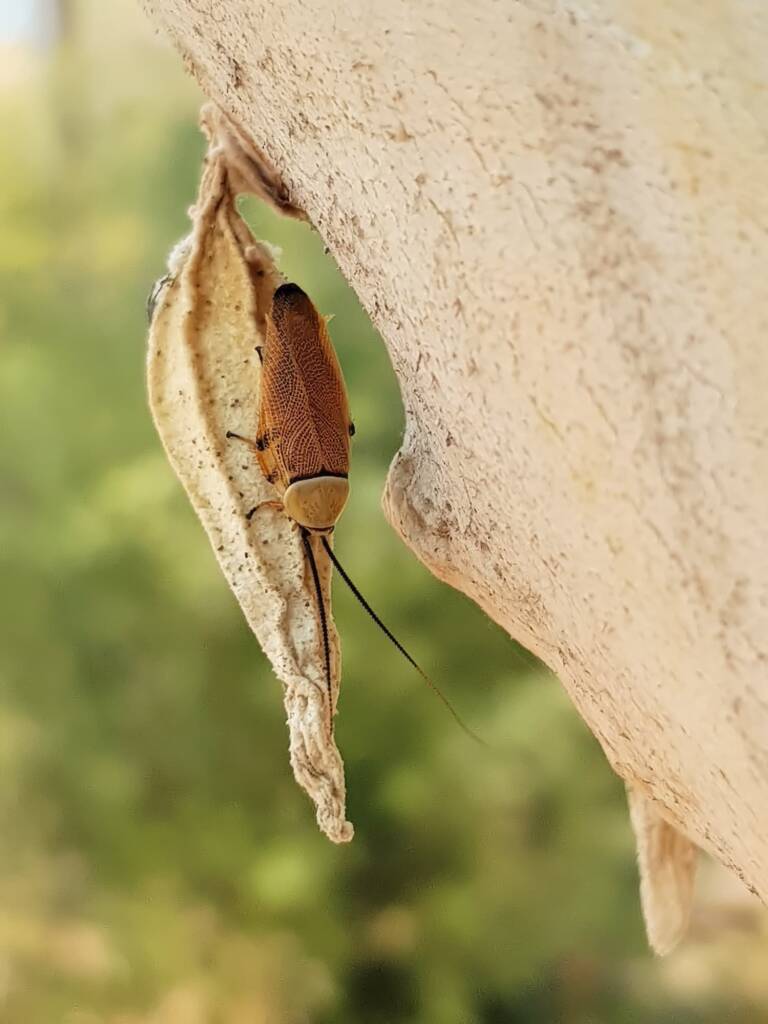
Footnote & References
- Ellipsidion australe (moult nymph/instar stage) © Marianne Broug, Marianne Broug photography, https://www.mariannebrougphotography.com/
- Austral Ellipsidion (Ellipsidion australe), Marianne Broug, iNaturalistAU, https://inaturalist.ala.org.au/observations/141341972
- Native Cockroaches, Australian Museum, https://australian.museum/learn/animals/insects/native-cockroaches/
- Ellipsidion Saussure, 1863, Atlas of Living Australia, https://bie.ala.org.au/species/https%3A//biodiversity.org.au/afd/taxa/ade19bd9-67b6-4c1b-b635-e8b2fddf7994
- Genus Ellipsidion, iNaturalistAU, https://inaturalist.ala.org.au/observations/192712706
- Ellipsidion (search), BunyipCo, https://bunyipco.blogspot.com/search?q=Ellipsidion
- Austral Ellipsidion – Ellipsidion australe, Brisbane Insects and Spiders, https://www.brisbaneinsects.com/brisbane_cockroaches/BushCockroaches.htm
BlattodeaAnamesia sp Balta bicolor Bush Cockroach Ellipsidion Ellipsidion australe Ellipsidion humarale Nasutitermes triodiae Termite — Alate
ColeopteraAmarygmus sp Anoplognathus sp Aphanestes gymnopleura Buprestidae Cerambycidae Coleoptera (Beetles) Curculionidae Digitonthophagus gazella Dung Beetle Eretes australis Helea scaphiformis Johannica gemellata (Pandorea Leaf Beetle) Ladybirds (Beetles) Lepidiota Lucanidae Neospades sp Lycidae Omorgus Paropsine Beetle Paropsisterna sp Pittosporum Leaf Beetle (Lamprolina impressicollis) Protaetia fusca Pterohelaeus sp Rhipiceridae Scarabaeidae Xylophilostenus octophyllus


